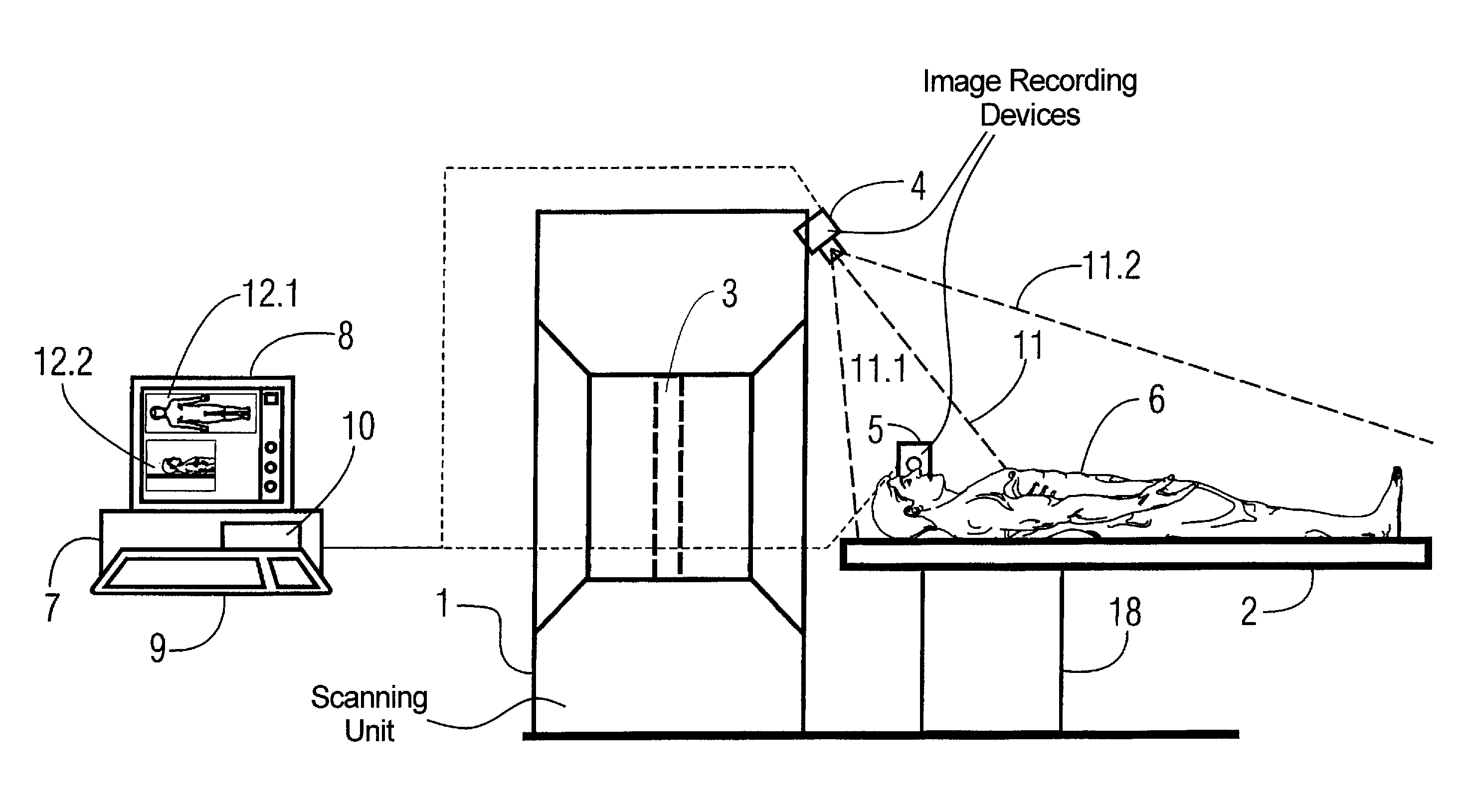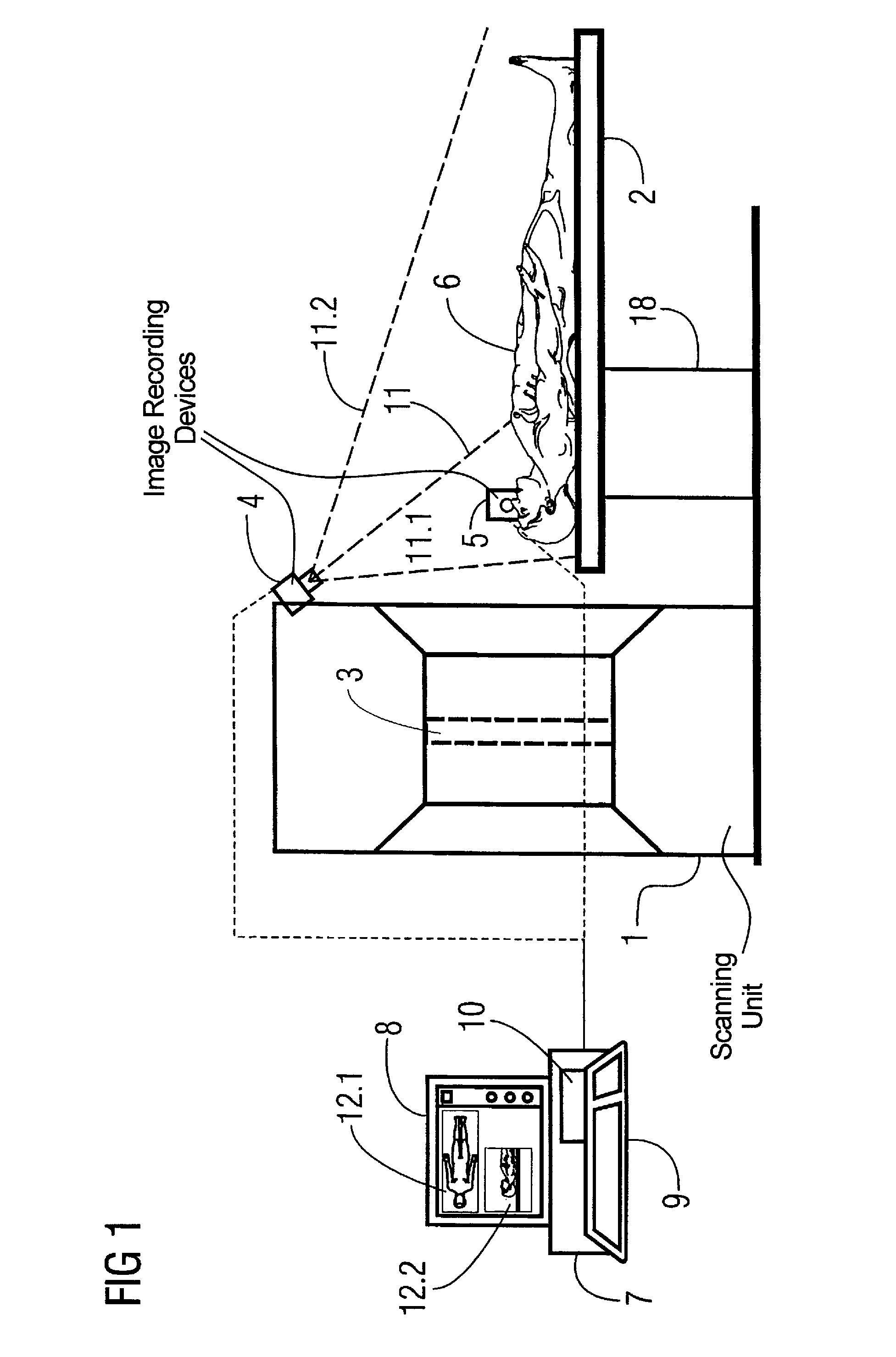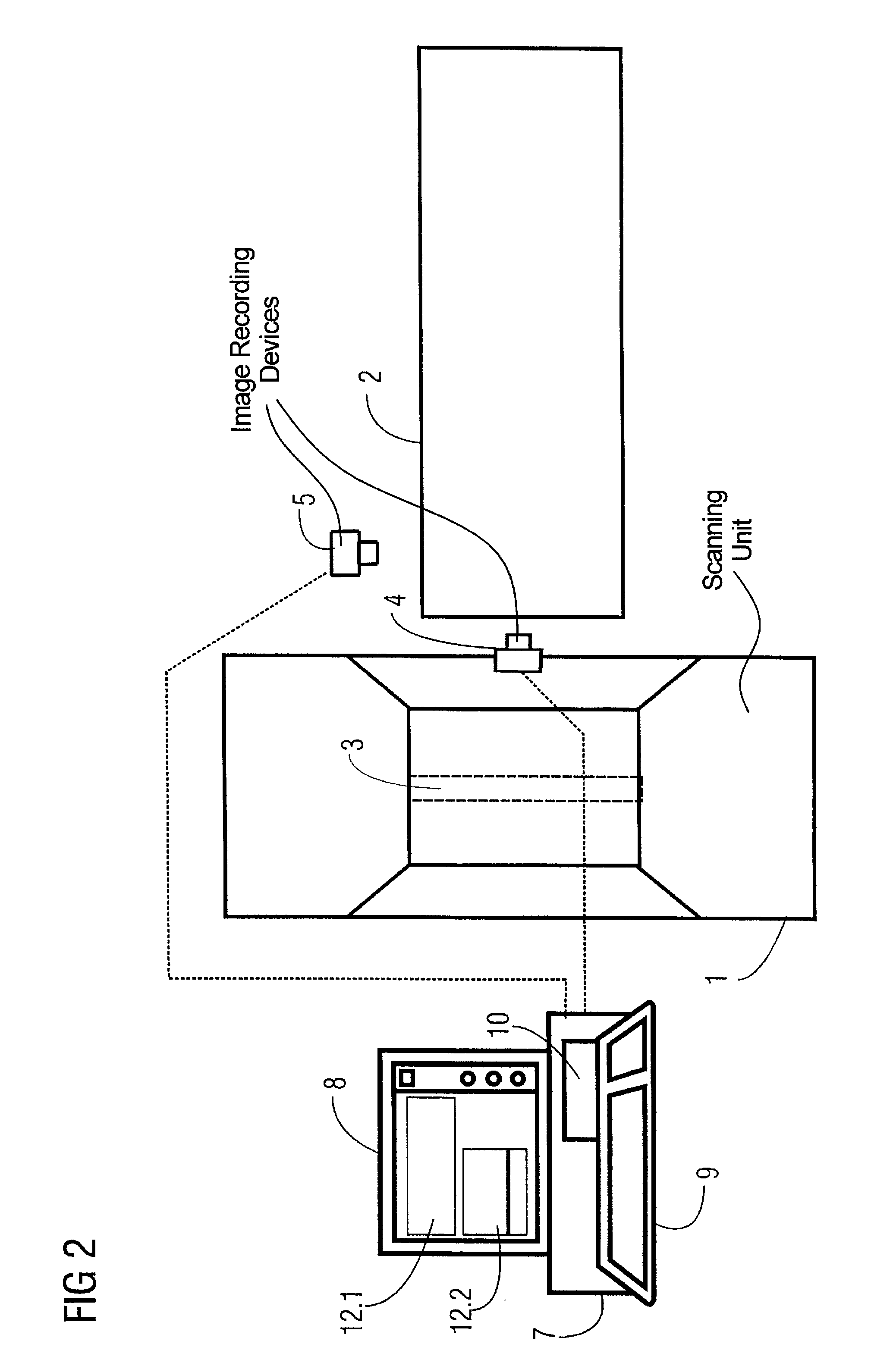Method and arrangement for positioning a patient in a medical diagnosis or therapy device
a technology for diagnosis and therapy, applied in the direction of patient positioning for diagnosis, instruments, applications, etc., can solve the problems of inconvenient use, inability to match the corresponding device, and inability to apply the mark first, so as to achieve less training
- Summary
- Abstract
- Description
- Claims
- Application Information
AI Technical Summary
Benefits of technology
Problems solved by technology
Method used
Image
Examples
Embodiment Construction
[0033]FIG. 1 shows a side view of a computed tomography apparatus having a scanning unit 1 (gantry), with a bed 2 that can be moved into the scanning unit 1, and a computer 7 that is responsible for the evaluation and control of the computed tomography apparatus.
[0034]The computer 7 has an input keyboard 9, a screen 8, and a storage 10. The images obtained by the recording of the video cameras 4 and 5 are shown in the image sections 12.1 and 12.2 on the screen 8. The video camera 4 is arranged above the patient and provides a frontal image of the patient, while the video camera 5 is arranged laterally to the patient and correspondingly provides a lateral image of the head / chest area of the patient.
[0035]The patient bed 2 is arranged on a movement device 18 that is controlled by the computer 7 in order to appropriately insert the patient on the bed 2 into the scanning unit 1. It should be noted that, for clarity, only the dashed displayed connections between the video cameras 4 and 5...
PUM
 Login to View More
Login to View More Abstract
Description
Claims
Application Information
 Login to View More
Login to View More - R&D
- Intellectual Property
- Life Sciences
- Materials
- Tech Scout
- Unparalleled Data Quality
- Higher Quality Content
- 60% Fewer Hallucinations
Browse by: Latest US Patents, China's latest patents, Technical Efficacy Thesaurus, Application Domain, Technology Topic, Popular Technical Reports.
© 2025 PatSnap. All rights reserved.Legal|Privacy policy|Modern Slavery Act Transparency Statement|Sitemap|About US| Contact US: help@patsnap.com



